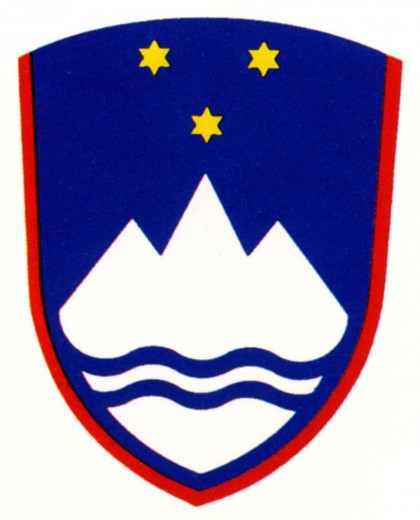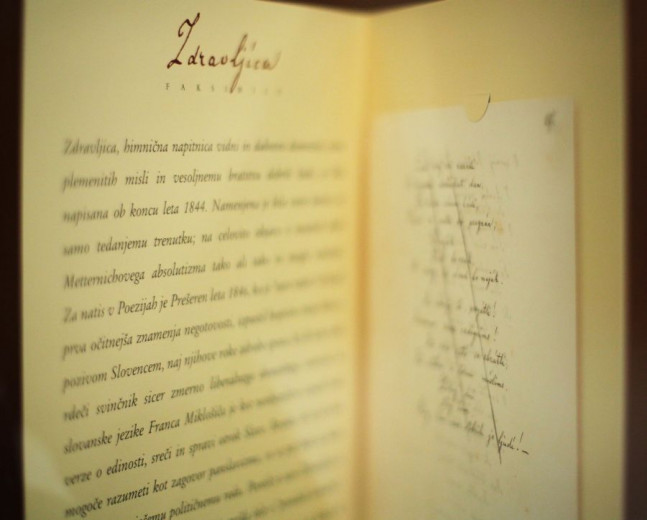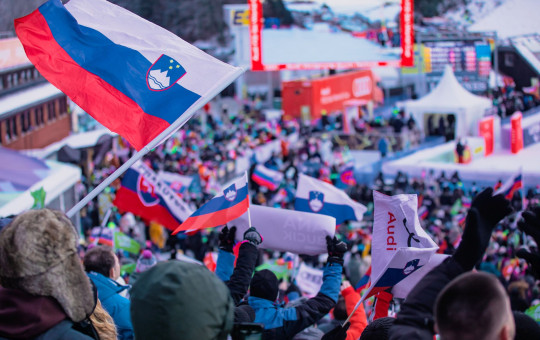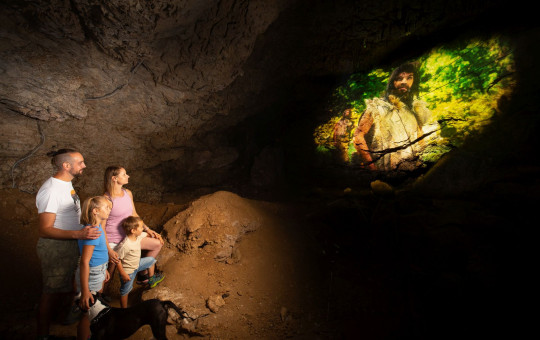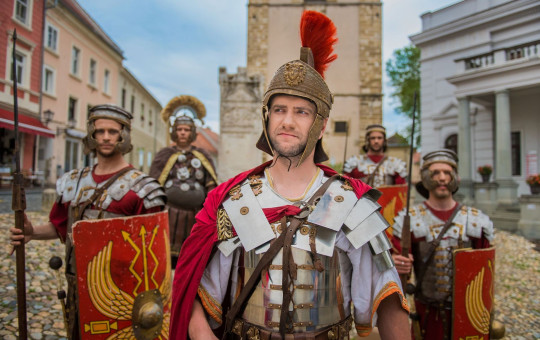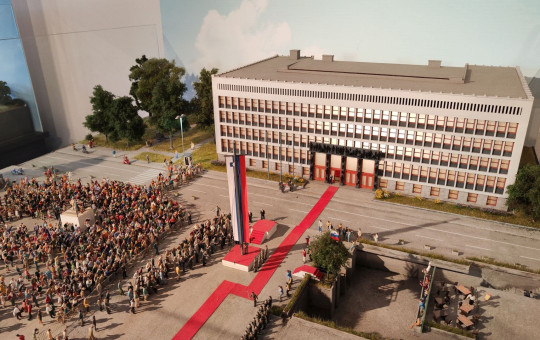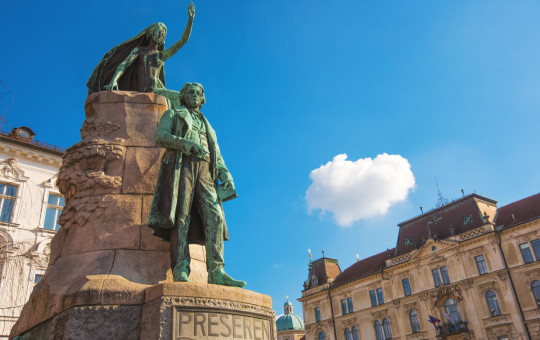Date: 8. June 2020
Time to read: 2 min
We also show our respect for the country through respect for its symbols. The coat of arms, flag and national anthem of the Republic of Slovenia are symbols that indicate affiliation with the country.
The development and appearance of Slovenian national symbols were influenced in particular by historical circumstances: the struggle of Slovenians for independence and for a geographically united Slovenia, the aspiration to preserve the Slovenian language and the fight for fundamental political and human rights. The foundations for Slovenia’s national symbols were laid in the 19th century, in the spirit of national awakening.
Slovenian flag
The national flag became established as a symbol of Slovenian identity back in the 19th century. The Slovenians determined the colours (white, blue and red) based on those featured in the coat of arms of the province of Carniola, and submitted them for the approval of the then ruling Austrian administration in Vienna, where the colours were accepted. The first national flag was hung by Slovenian students in Vienna in March 1848 during a period of revolutionary tumult.
In Ljubljana, the flag was first raised on the building of the Zlata riba inn at Wolfova ulica 8 on 7 April 1848 by the patriotic student Lovro Toman and his like-minded colleagues.
With the appearance of the Slovenian tricolour flag, he was responding to the display of the German flag on the tower of Ljubljana Castle. In memory of this act we commemorate 7 April as the day of the Slovenian flag.
-
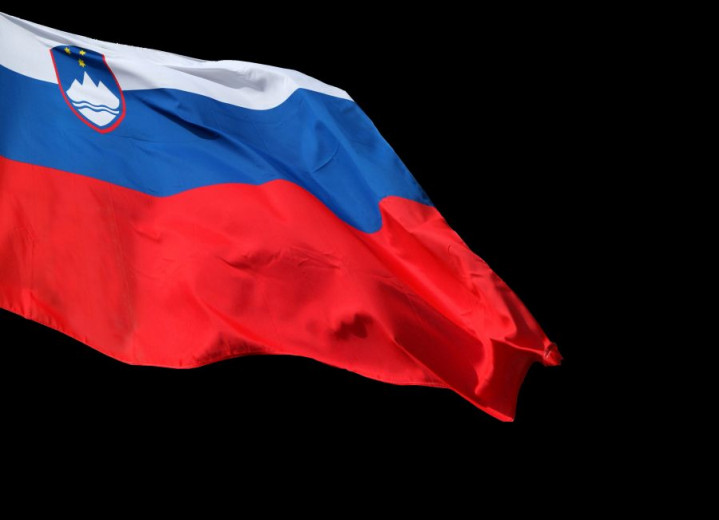 The flag of the Republic of Slovenia is a white-blue-red tricolour flag. The colours run in this order from top to bottom, each colour occupying a horizontal band covering one third of the flag. The coat-of-arms is located in the upper left-hand corner.
The flag of the Republic of Slovenia is a white-blue-red tricolour flag. The colours run in this order from top to bottom, each colour occupying a horizontal band covering one third of the flag. The coat-of-arms is located in the upper left-hand corner.
-
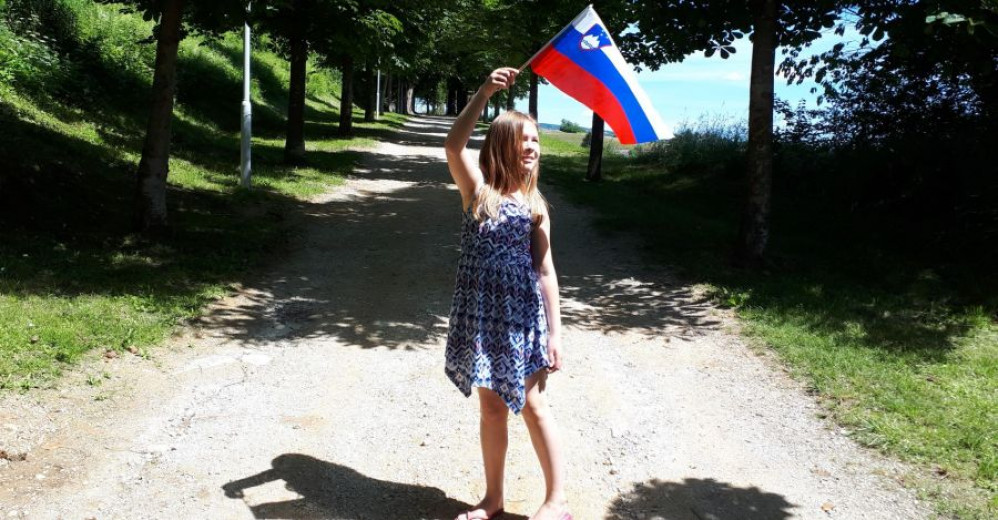 7 April marks Slovenian Flag Day. Photo: Danila Golob
7 April marks Slovenian Flag Day. Photo: Danila Golob
The national flag was finally formalised on 24 June 1991 by the Slovenian National Assembly. Immediately before Slovenia gained independence, the new Slovenian national flag replaced the old flag of the Republic.
Coat of arms of the Republic of Slovenia
Slovenia lies at the crossroads of the Alpine, Mediterranean, Pannonian and Dinaric regions.
The diversity in such a small area is also reflected in the symbolism of the Slovenian coat-of-arms.
The coat-of-arms of Slovenia has the form of a shield. The centre of the shield depicts Mount Triglav, as a white emblem on a blue background, with two wavy lines below it symbolising the sea and rivers, and three six-point stars arranged above it in the shape of a point-down triangle. The shield has a red border on the left and right sides, so that it has all three colours which also make up the flag. The lower part of the coat-of-arms symbolises the Slovenian landscape, which encompasses Alpine peaks in the northwest, the Primorska region in the south and the Pannonian Plain in the east.
The coat-of-arms was designed by Academy-trained sculptor Marko Pogačnik, who describes it as a "cosmogram" of the Republic of Slovenia.
Slovenian national anthem
Slovenia acquired its official national anthem, Zdravljica, only in 1990, just a few months before the December plebiscite on independence. The text is the seventh stanza of Zdravljica (A Toast) by Slovenia's greatest and most celebrated poet, France Prešeren, and the melody of the anthem is from the choral work of the same name by Stanko Premrl.
Zdravljica was written in 1844 during the Spring of Nations in Europe, in the context of the United Slovenia movement, which was very active in the cultural and political spheres of national awakening.
The poem is about the co-existence of nations and is a toast to all good-hearted people.
Zdravljica stands out among European anthems in a positive way. Its message goes beyond nationalism: in particular in the seventh, penultimate, stanza ("May all peoples thrive and prosper") the poem reaches its culmination in praising the values of peace, tolerance and cooperation among nations.
In March 2020, the European Commission awarded the European Heritage Label to Prešeren's Zdravljica.

